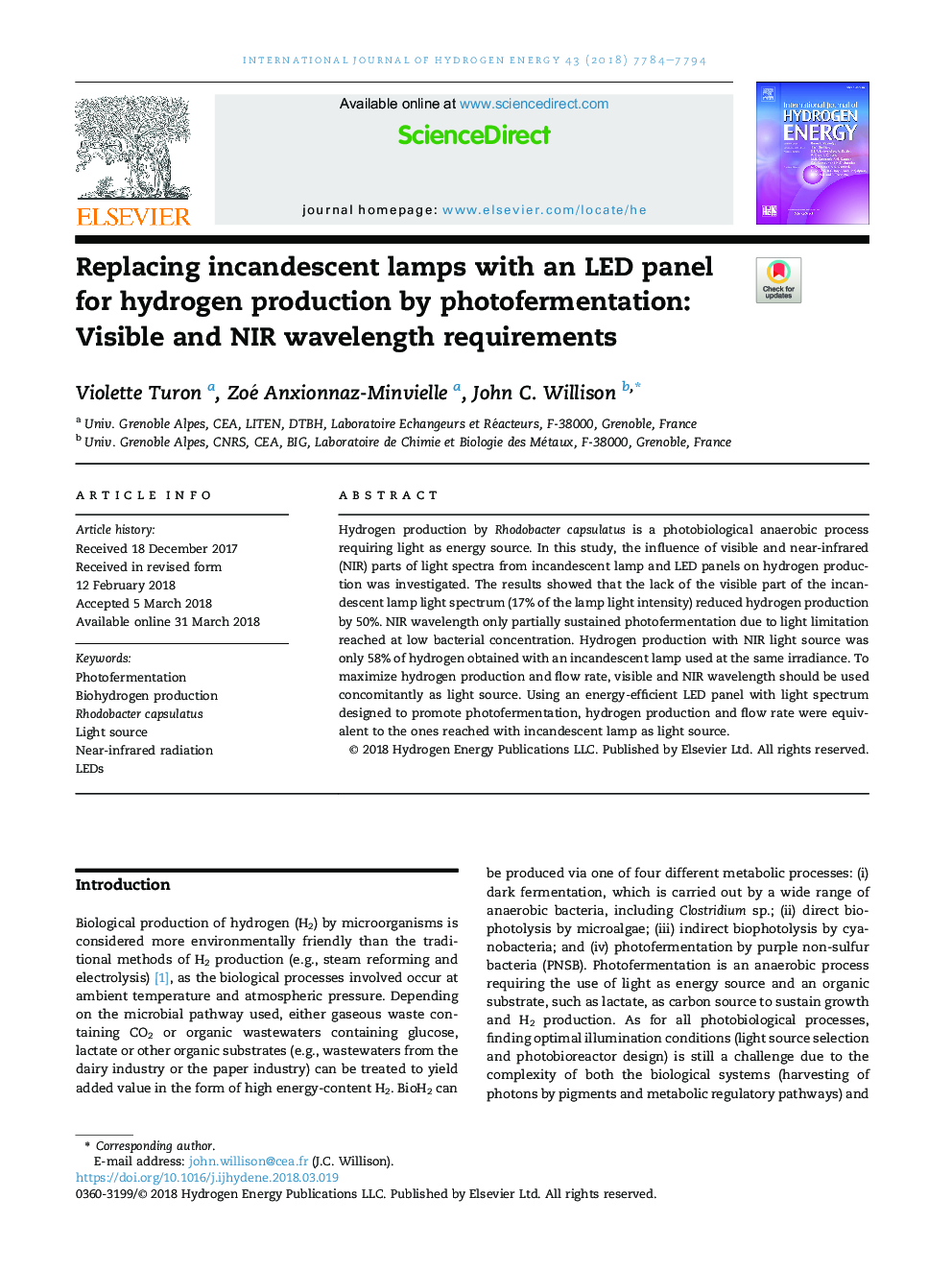| Article ID | Journal | Published Year | Pages | File Type |
|---|---|---|---|---|
| 7706355 | International Journal of Hydrogen Energy | 2018 | 11 Pages |
Abstract
Hydrogen production by Rhodobacter capsulatus is a photobiological anaerobic process requiring light as energy source. In this study, the influence of visible and near-infrared (NIR) parts of light spectra from incandescent lamp and LED panels on hydrogen production was investigated. The results showed that the lack of the visible part of the incandescent lamp light spectrum (17% of the lamp light intensity) reduced hydrogen production by 50%. NIR wavelength only partially sustained photofermentation due to light limitation reached at low bacterial concentration. Hydrogen production with NIR light source was only 58% of hydrogen obtained with an incandescent lamp used at the same irradiance. To maximize hydrogen production and flow rate, visible and NIR wavelength should be used concomitantly as light source. Using an energy-efficient LED panel with light spectrum designed to promote photofermentation, hydrogen production and flow rate were equivalent to the ones reached with incandescent lamp as light source.
Keywords
Related Topics
Physical Sciences and Engineering
Chemistry
Electrochemistry
Authors
Violette Turon, Zoé Anxionnaz-Minvielle, John C. Willison,
